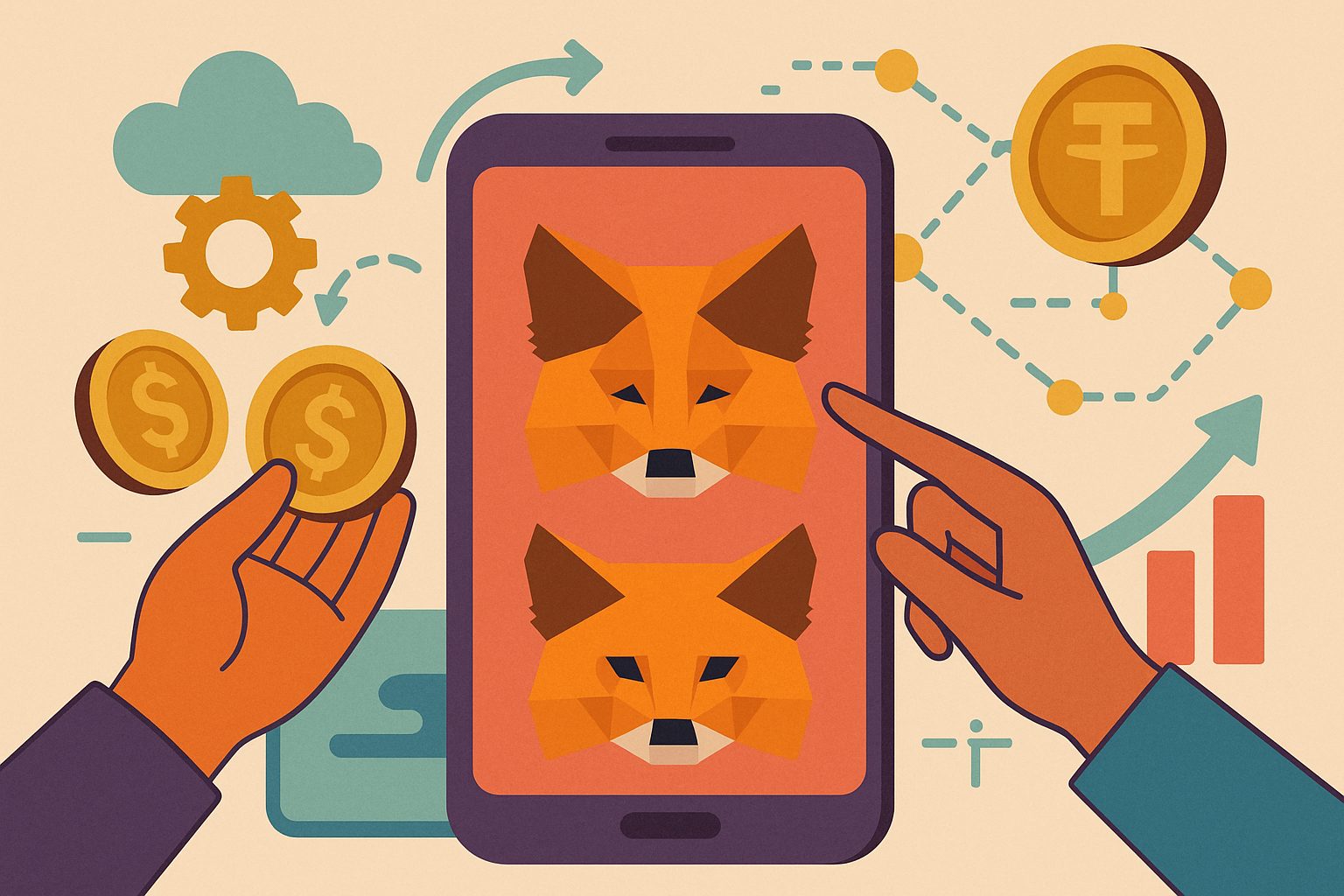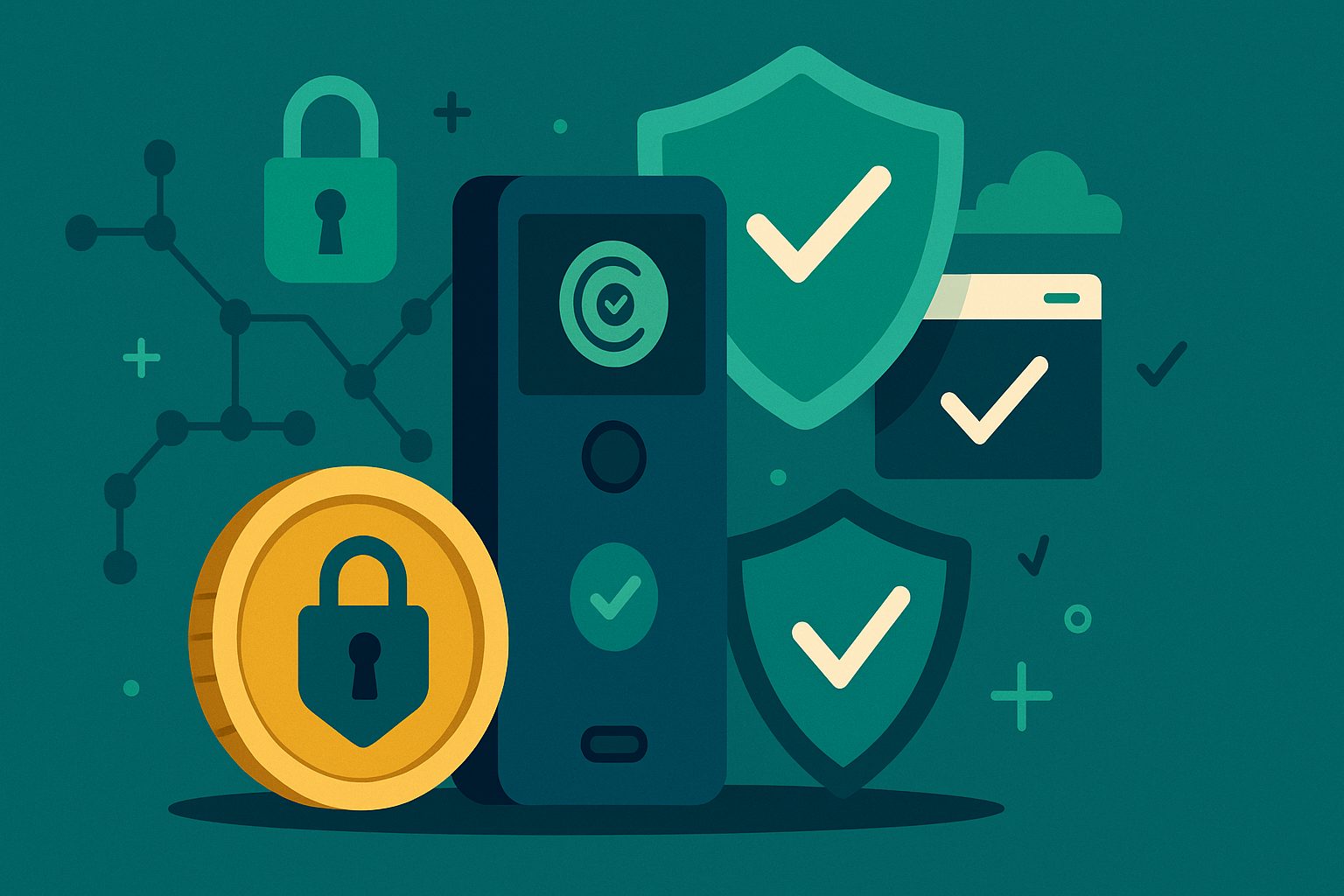Why Wallet Choice Is Crucial for Token Crowdfunding
Selecting the right wallet is a foundational decision for any token crowdfunding campaign. Your chosen wallet not only safeguards contributors’ funds but also influences user experience, trust, and overall success. In an environment where security breaches and phishing attacks make headlines, a robust wallet solution can distinguish your project as professional and reliable. Conversely, a cumbersome or insecure wallet can deter potential backers and undermine confidence before your token even reaches the blockchain. This article unpacks the critical factors to consider—security, ease of use, compatibility, and more—guiding you toward the ideal wallet choice that aligns with your project’s goals and your community’s needs.
Fortifying Trust: Security Features That Matter Most
When contributors entrust their assets, they expect ironclad security. Look for wallets that offer strong encryption, secure key storage, and multi-factor authentication. Non-custodial wallets—where users retain sole control over private keys—are favored for decentralization, but require careful handling of backups and seed phrases. Hardware wallets elevate protection by isolating keys in a physical device, impervious to malware on connected computers. Some wallets add multi-signature (multisig) capabilities, requiring approval from multiple parties before transactions execute—an essential feature for campaigns managed by teams or DAOs. Ultimately, a wallet that prioritizes security fosters community confidence, signaling that you have taken every measure to safeguard backers’ contributions.
Balancing Simplicity and Sophistication: User Experience Considerations
An inviting user experience can make or break participation rates. While advanced features are appealing to crypto veterans, newcomers demand intuitive interfaces and clear instructions. Wallets with streamlined onboarding flows—simple account creation, clear seed phrase guidance, and in-app tutorials—encourage adoption. Features like built-in network switching, automated gas fee suggestions, and real-time balance updates reduce friction during token purchases. Responsive customer support, accessible via live chat or community forums, reassures users when questions arise. By balancing sophistication with simplicity, you ensure that both seasoned investors and first-time participants can engage seamlessly with your campaign.
Custodial vs. Non-Custodial: Weighing Control Against Convenience
Custodial wallets, where a third party holds private keys, offer convenience at the expense of decentralization. Users enjoy password-based access and built-in recovery mechanisms, shielding them from the burden of seed phrase management. However, custodial solutions introduce counterparty risk; if the provider suffers a hack or insolvency, contributors’ funds may be jeopardized. Non-custodial wallets, conversely, empower users with full control over their keys but transfer responsibility for safekeeping to each individual. Many projects adopt a hybrid approach: recommending non-custodial wallets while offering optional custodial onboarding for less experienced backers. This strategy caters to varied risk appetites and comfort levels, broadening your campaign’s reach.
Cross-Chain Compatibility: Expanding Your Token’s Reach
With the proliferation of blockchains—from Ethereum and Binance Smart Chain to emerging Layer 2 networks—multi-chain support is a game-changer. Wallets that seamlessly integrate multiple networks allow backers to use their preferred chains and spread risk. Cross-chain wallets often feature built-in bridges or partner integrations, simplifying the process of transferring tokens between networks without external tools. For token crowdfunding campaigns, this flexibility translates to wider accessibility: contributors can participate using low-fee chains or familiar platforms. Ensuring that your chosen wallet supports your token’s native chain—and any anticipated secondary chains—positions your campaign for maximum inclusivity.
Seamless Crowdfunding Platform Integration
A wallet’s compatibility with major crowdfunding platforms and decentralized applications (dApps) streamlines the user journey. Wallets equipped with Web3 connectivity—such as built-in support for WalletConnect or MetaMask protocols—enable one-click connection to your campaign’s sale interface. This eliminates manual address copying, reducing errors and boosting conversion rates. Some wallets also support embedded token swap features, letting backers purchase your token directly within the app using a variety of base assets. By prioritizing wallets with robust dApp integration, you deliver a cohesive, end-to-end experience that keeps contributors engaged and reduces drop-off during crucial purchase steps.
Form Factor Matters: Desktop, Mobile, and Hardware Wallets
The device preferences of your audience inform wallet selection. Desktop wallets excel in advanced functionality—dApp browser extensions, custom RPC endpoints, and detailed transaction analytics—appealing to power users. Mobile wallets offer convenience, enabling backers to participate from anywhere, but must balance security and usability on smaller screens. Hardware wallets, like Ledger or Trezor devices, deliver the highest security but introduce friction in setup and require additional hardware. Many projects recommend a tiered approach: hardware wallets for large contributors, desktop wallets for active participants, and mobile wallets for casual backers. Offering clear guidance on each option empowers contributors to choose the solution that fits their needs.
Community Reputation: Choosing Wallets Backed by Trust
Wallets with strong community reputations tend to attract more users. Before endorsing a wallet, review audit reports, security incident histories, and user feedback on forums or social media. Wallets that engage in open-source development and invite external audits demonstrate transparency and accountability. Community-driven wallets often host active developer communities, providing faster bug fixes and feature updates. By associating your campaign with reputable wallets, you signal to potential backers that you value their security and user experience, which can translate into higher participation and stronger word-of-mouth referrals.
Feature Spotlight: Advanced Tools for Campaign Management
Beyond basic send-and-receive functions, some wallets offer campaign-specific tools that simplify token crowdfunding. Multi-account support lets project teams manage separate treasury and operational funds within the same application. Built-in token distribution modules can automate vesting schedules or airdrop claims directly through the wallet interface. Gas optimization features—batch transactions, EIP-1559 fee suggestions, and layer-2 fee estimation—help both contributors and campaign managers minimize costs during peak network congestion. By leveraging wallets with advanced campaign tools, you streamline operational workflows and provide contributors with a friction-free experience that enhances trust.
Regulatory Readiness: Compliance and KYC Considerations
Depending on your jurisdiction and campaign structure, Know-Your-Customer (KYC) or Anti-Money-Laundering (AML) compliance may be necessary. Some wallets partner with KYC providers to offer integrated identity checks, enabling contributors to complete verification within the wallet itself. Other wallets allow seamless export of transaction histories, simplifying audits and reporting requirements. While full custodial KYC may deter privacy-focused users, offering optional compliance pathways can broaden participation from institutional backers or regions with stringent regulations. Aligning wallet capabilities with your regulatory obligations ensures that your campaign operates within legal frameworks while accommodating diverse contributor profiles.
Onboarding Excellence: Educating Your Backers
Even the best wallet can feel intimidating to newcomers. To mitigate this, provide step-by-step onboarding guides tailored to your chosen wallet(s), complete with annotated screenshots or short video tutorials. Explain key concepts—seed phrases, private keys, gas fees—in clear, jargon-free language. Offer sandbox environments or testnet tutorials where users can practice transactions without risking real assets. Additionally, host live Q&A sessions or dedicated support channels where contributors can seek real-time assistance. By prioritizing educational resources, you reduce entry barriers, minimize user errors, and foster a supportive community atmosphere around your crowdfunding campaign.
Future-Proofing Your Choice: Scalability and Updates
Blockchain technology evolves rapidly; the wallet you select today must adapt to tomorrow’s innovations. Choose wallets with active development roadmaps, frequent security patches, and clear upgrade paths for new standards—such as emerging Layer 2 solutions or novel signature schemes. Wallets that modularize features through plugins or extensions can integrate upcoming blockchain networks without requiring a full rebuild. By aligning your campaign with wallets committed to continuous improvement, you safeguard contributor experience and ensure compatibility with evolving ecosystem trends.
Crafting Your Selection Framework: Key Questions to Ask
As you evaluate wallet options, anchor your decision-making in targeted questions. What level of security does our audience demand, and how do we balance that with convenience? Which devices and platforms do our backers prefer, and how can we accommodate diverse usage patterns? What integrations—dApp connectors, KYC modules, cross-chain bridges—are non-negotiable for our campaign’s success? How will our choice affect user onboarding, support load, and campaign logistics? By answering these questions, you develop a clear selection matrix that prioritizes features by impact, ensuring that the wallet you endorse resonates with both project objectives and contributor expectations.
A Real-World Example: TokenLaunch’s Multi-Wallet Strategy
Consider TokenLaunch, a recent Web3 crowdfunding platform that embraced a multi-wallet strategy. Recognizing varied contributor preferences, TokenLaunch recommended three wallets on its website: a hardware wallet for institutional backers seeking maximum security, a popular desktop extension wallet for active crypto enthusiasts, and a mobile wallet with an integrated dApp browser for casual users. Each wallet recommendation included tailored onboarding resources, while the TokenLaunch smart contract supported WalletConnect for seamless connectivity across all three. This inclusive approach widened participation, reduced technical support queries, and fostered community goodwill—ultimately driving the campaign significantly over its funding target.
Transitioning from Selection to Implementation
Once you’ve chosen your wallet(s), integrate them into your campaign infrastructure. Update your website with clear download links, platform badges, and connection instructions. Embed direct dApp connection buttons—such as “Connect with MetaMask” or “Connect with WalletConnect”—into your token sale page. Test end-to-end transactions with team members using each supported wallet to catch potential issues before launch. Establish dedicated support channels—Discord roles, Telegram groups, or helpdesk tickets—for wallet-related queries. By operationalizing your wallet choice across all campaign touchpoints, you create a polished, professional launch environment that instills backer confidence.
Measuring Success: KPIs for Wallet Engagement
After launch, track metrics that gauge wallet adoption and user experience. Monitor percentage of transactions by wallet type, average transaction success rate, and support ticket volume related to wallet issues. Analyze drop-off rates during the connection and transaction signing steps to identify friction points. Solicit user feedback through post-campaign surveys, asking contributors about their wallet experience, pain points, and feature requests. These insights inform both immediate improvements—such as adjusting onboarding materials—and long-term strategy, guiding wallet recommendations for future campaigns.
Embracing Continuous Improvement
Even with thorough preparation, real-world campaigns reveal unexpected challenges. Maintain an agile mindset: update guides, tweak fee recommendations, or introduce alternative wallets in response to community feedback. Collaborate with wallet providers on feature requests or bug fixes, leveraging their developer support channels. Document lessons learned and share them with your community, reinforcing transparency and demonstrating your commitment to a quality user experience. By treating wallet management as an evolving process rather than a one-time setup, you uphold backer trust and lay the groundwork for successful future crowdfunding endeavors.
Securing Success with the Right Wallet
The wallet you choose for your token crowdfunding campaign resonates far beyond a simple technical integration. It reflects your project’s dedication to security, user experience, and community empowerment. From non-custodial hardware solutions that prioritize maximum protection to mobile apps that welcome newcomers, each wallet option carries distinct trade-offs. By methodically evaluating security features, compatibility, usability, and regulatory readiness—and by providing comprehensive onboarding and support—you craft a contributor journey that is smooth, trustworthy, and inclusive. With the right wallet in hand, your campaign not only achieves its funding goals but also solidifies a reputation for professionalism and community focus, setting the stage for long-term project success.




